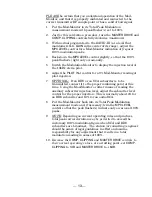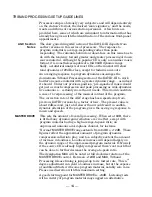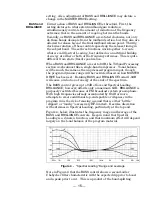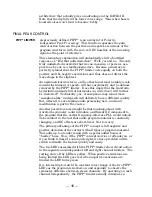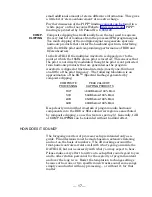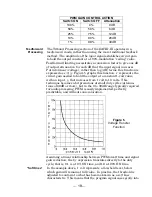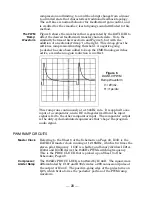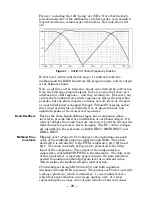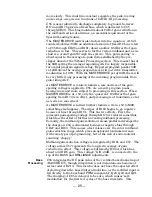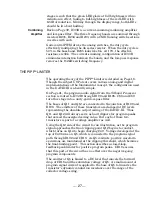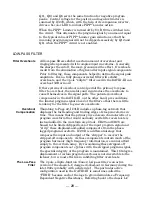
13
PLEASE
be certain that you understand operation of the Mod-
Monitor, and that it is properly calibrated and connected to the
correct transmitter RF sample point or has a solid off-air signal.
1. Put the Mod-Monitor in its Total Peak Modulation
measurement mode with peak flasher(s) set to 100%.
2.
Just for this calibration procedure
, turn the
MASTER DRIVE
and
COMP. CLIPPING
controls fully clockwise (maximum).
3. With normal program fed to the
DAVID-III
(at a level that
maintains
A.G.C. GAIN
in the center of its range), adjust the
MPX LEVEL
control for a Mod-Monitor indication of
frequent
100%-modulation peaks.
4. Back-down the
MPX LEVEL
control slightly, so that the 100%
peak flasher(s) light only occasionally.
5. Switch the Modulation Monitor to display the injection level of
the 19kHz stereo pilot.
6.
Adjust the
PILOT INJ.
control for a 9% Mod-Monitor reading of
pilot injection.
7.
OPTIONAL:
If an RDS or an SCA subcarrier is to be
transmitted, connect it to the proper combining point at this
time. Using the Mod-Monitor or other means of reading the
auxiliary subcarrier injection level, adjust the subcarrier level
control for the proper injection. This is normally about 4% for
an RDS subcarrier and 10% for an audio SCA.
8. Put the Mod-Monitor back into its Total Peak Modulation
measurement mode and, if necessary, trim the
MPX LEVEL
control so that the peak flasher(s) indicate only
occasional
100%
peaks.
9.
NOTE:
Depending on current operating rules and practices,
total peak carrier deviation
may be permitted
to exceed the
customary 100%-modulation figure when SCA and RDS
subcarriers are broadcast,. The station (or consulting) engineer
should be aware of legal guidelines in effect and assume
responsibility for any adjustment that results in a total
modulation reading in excess of 100%.
10.
Decrease the
COMP. CLIPPING
and
MASTER DRIVE
controls to
their normal operating values
. As a starting point, set
COMP.
CLIPPING
to
1dB
and
MASTER DRIVE
to
+6dB
.















